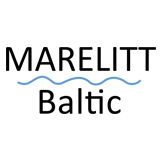The Baltic Sea Blueprint: A Step-by-Step Roadmap On How to Approach Derelict Fishing Gear
According to the MARELITT Baltic Project, "THE NEW, comprehensive knowledge generated by the MARELITT Baltic project has been condensed into this Baltic Sea Blueprint. The blueprint crystallises the most crucial requirements into step-by-step recommendations for addressing mitigation within each of the four activities.
This blueprint distills the detailed project findings, which are available in 11 reports, into recommendations, lessons learned and best practices.
All in all, the Baltic Sea Blueprint offers policymakers and harbour managers a strategic mitigation solution that can be used to both plan clean-up operations at sea for plasticizers and to create a waste management system capable of handling DFG.
The mitigation solution is grounded in a process consisting of four key activities: mapping of sea areas where DFG has accumulated, retrieval of DFG from these areas, identification of optimal recycling or waste management options for landed DFG, and prevention through the reduction of gear loss rate during fishing and improved gear marking. The practical work revealed, however, that coordination of these activities requires structured roadmaps.
Therefore, the blueprint presents so-called pillars that, for each activity, contain references to practical details from the relevant reports, step-by-step recommendations and the potential stakeholders to involve."
The report provides a step-by-step roadmap for tackling the problem of Derelict Fishing Gear (DFG) in the Baltic Sea. It draws on experiences from Estonia, Germany, Poland, and Sweden, covering mapping, retrieval, waste management, and prevention
Background
Ghost fishing is when abandoned or lost fishing gear traps marine life, severely affecting ecosystems. The Baltic Sea, with its turbid waters, is particularly vulnerable. Earlier studies (e.g., FANTARED II, 2002) highlighted the risk, but no coordinated international actions followed until now
The MARELITT Baltic Project (2016–2019)
- One of the first transnational initiatives to address DFG globally.
- Developed methodologies for mapping DFG, retrieval, waste handling, and prevention.
- Brought together government agencies, fishers, NGOs, divers, and scientists
The Baltic Sea Blueprint
It condenses the project’s findings into a practical roadmap for policymakers, harbor managers, and stakeholders, organized around four pillars:
- Pillar I: Mapping DFG Host Areas
Build trust with fishers and divers for better data.
Combine official fishing data, diver observations, and environmental mapping (e.g., sonar, shipwrecks)
Create detailed DFG host area maps to guide clean-up efforts.| - Pillar II: Retrieval of DFG
Environmental Impact Assessments (EIA) must guide retrieval actions, especially near shipwrecks
Retrieval by dragging (using towed hooks) or diving.
Need legal clarity on ownership and handling of retrieved nets.
Promote training and safety for divers; standardized operations recommended. - Pillar III: Waste Management of Retrieved DFG
Divided into two sections:
Reception in harbors:
Install special containers and pre-processing areas.
Educate fishers and harbor personnel about DFG handling
Waste treatment:
Remove hazardous parts (like lead lines) early.
Support innovative processing methods (e.g., pyrolysis).
Encourage material recycling through specialized companies like Plastix (Denmark) and Aquafil (Slovenia). - Pillar IV: Prevention
Raise awareness and build trust among fishers.
Study causes of gear loss: seabed obstacles, vessel collisions, bad weather
Promote improved gear marking and better fishing practices.
Encourage economic incentives for responsible fishing.
Policy and Legislation Recommendations
Use tools like the EU Port Reception Facilities Directive, EU Plastics Strategy, and the Extended Producer Responsibility (EPR) schemes.
Support retrieval through funds like the European Maritime and Fisheries Fund (EMFF)
Best Practices Cited
Iceland: Successful net return and recycling system.
Norway: Annual government-funded retrieval campaigns combined with strong fisher involvement
Key Challenges
Need for better DFG disposal infrastructure.
Regulatory gaps in gear ownership after retrieval.
Fishers’ reluctance to change without economic incentives.
Necessity to handle hazardous waste properly.
Key Findings and Final Recommendations
Parallel activities (retrieval, waste handling, prevention) are needed.
Strategic DFG hotspot maps improve efficiency and reduce costs.
Policy support and funding are essential to maintain momentum
Collaborative efforts between harbors, municipalities, waste managers, and the fishing community are critical for success.


